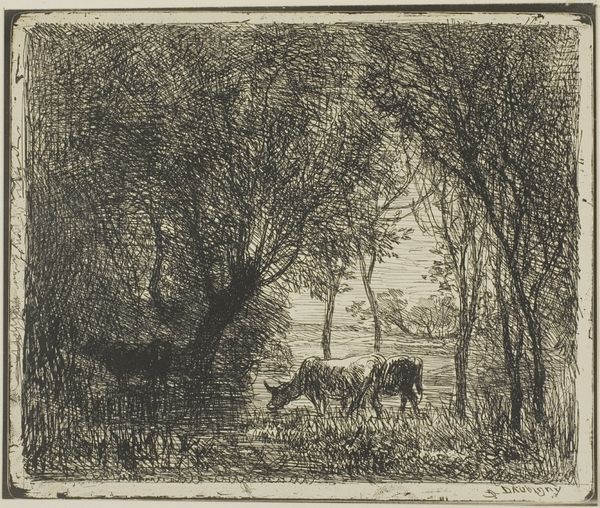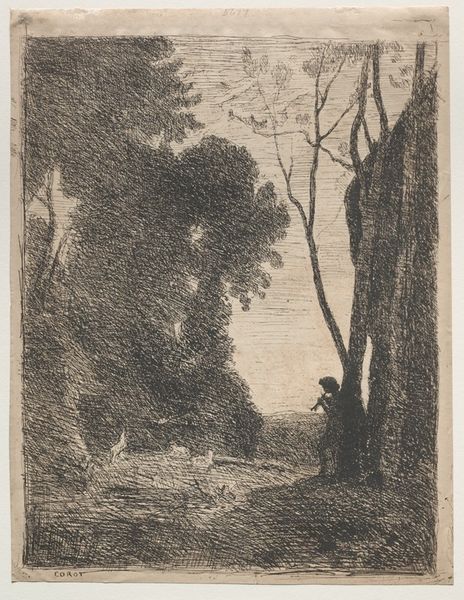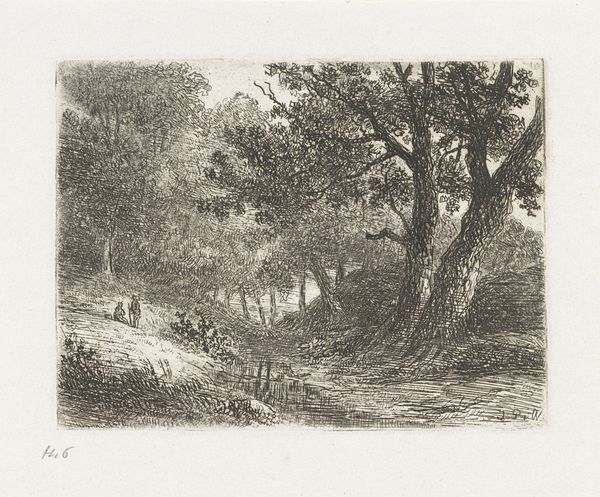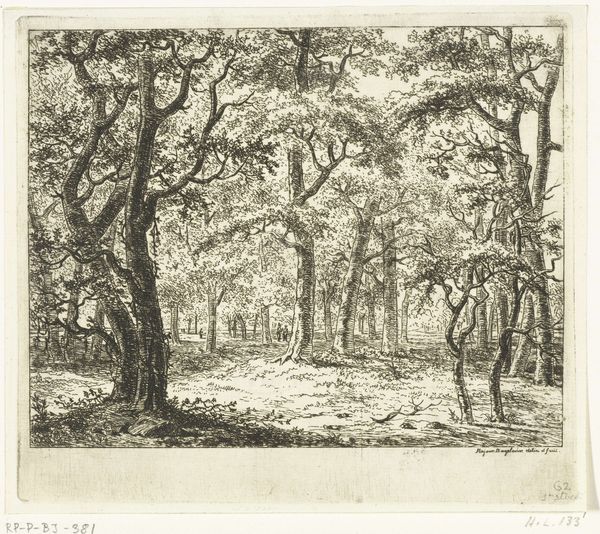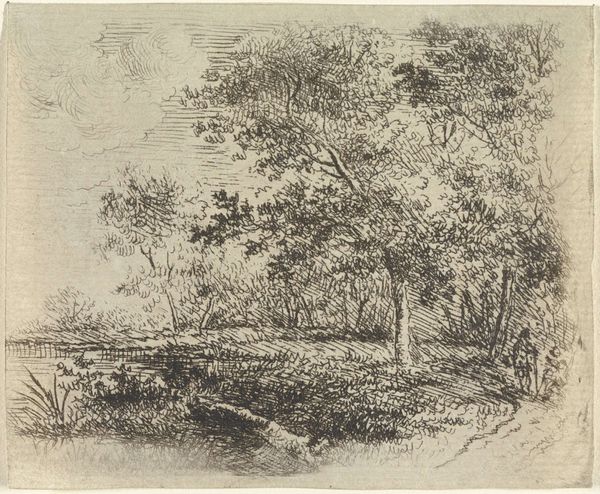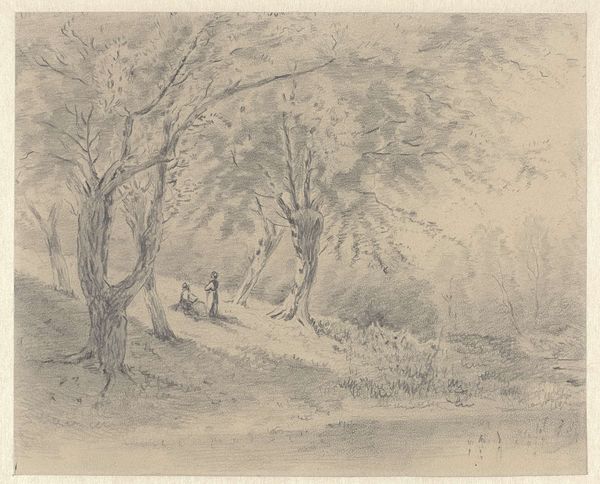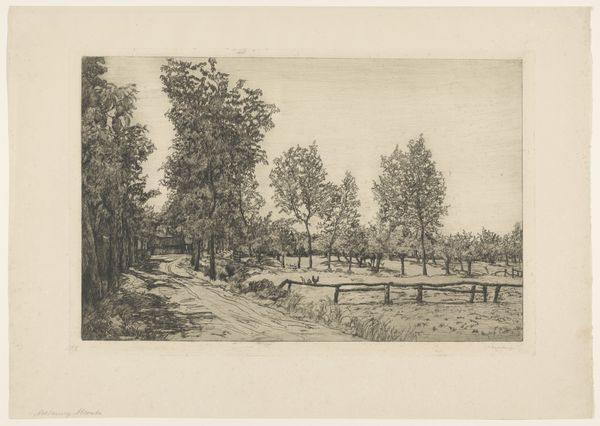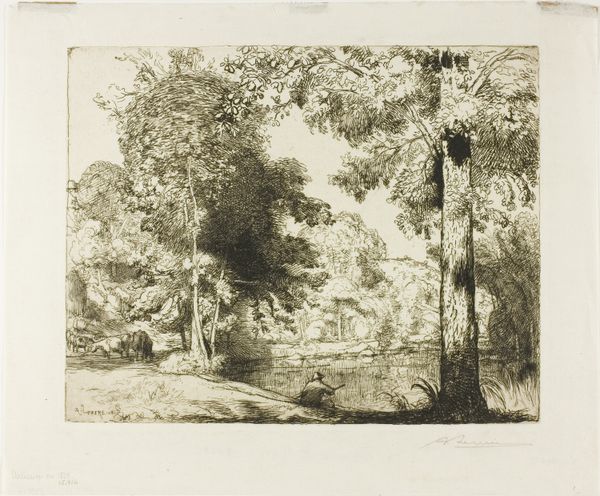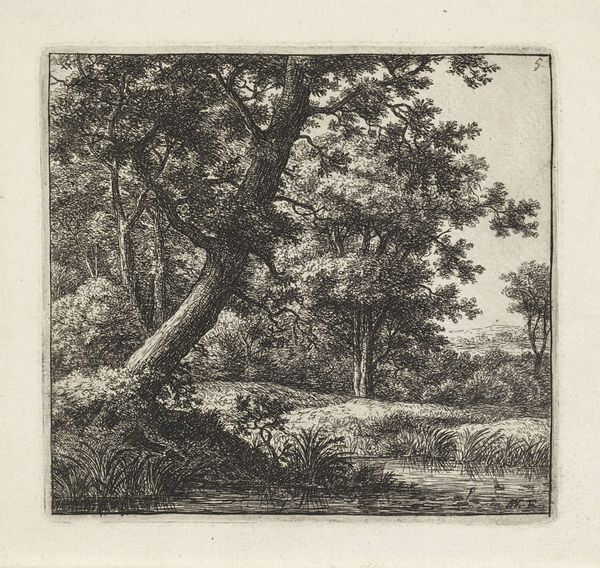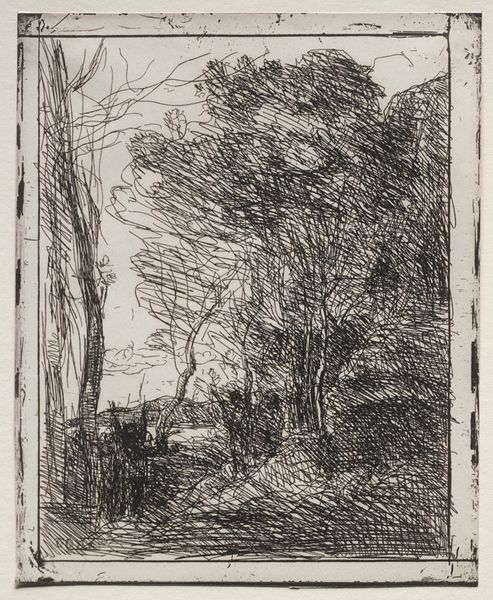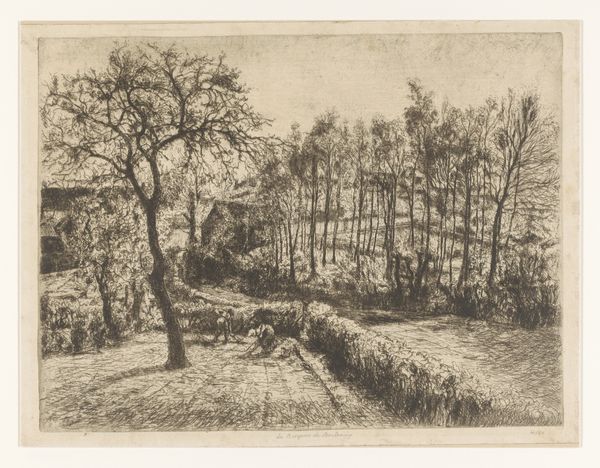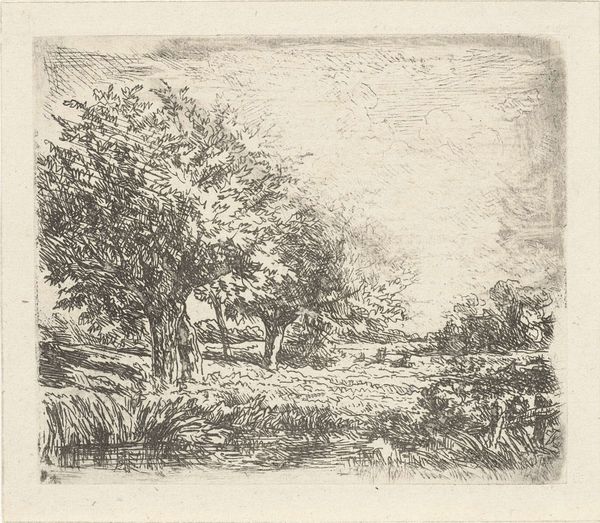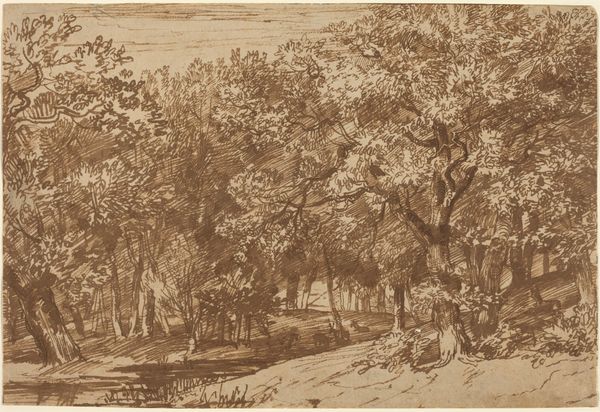
drawing, etching
#
drawing
#
etching
#
landscape
#
etching
Dimensions: height 81 mm, width 99 mm
Copyright: Rijks Museum: Open Domain
Editor: This etching, "Weg met bomen aan weerszijden," or "Road with Trees on Both Sides," created sometime between 1859 and 1886 by Elias Stark, is really striking. The landscape feels both inviting and slightly desolate, almost as if the path is disappearing. What can you tell me about its place in art history? Curator: Stark’s print is fascinating precisely because of that tension you sensed. Consider the social context: the late 19th century was a time of rapid industrialization and urbanization. This rural scene becomes not just a landscape, but a statement. What is the message of showing the marginalisation of the landscape during that period, made public via display and etching medium. Editor: So, you're saying the very act of creating and exhibiting this scene of retreating nature might be interpreted as a critique of the increasing urbanization during that era? Curator: Precisely. The composition, with its receding path and the relatively crude line work evokes a world of growing instability. Landscape art was heavily influenced by nationalism and identity and to capture it fading and "desolate" is the mark of the era, which can in turn create conversation about political sentiment at that time. Why do you think it is shown in an institution today, almost 200 years later? Editor: Perhaps it serves as a reminder of what's lost as society progresses, or an echo of the conversations artists are still having about the environment? I see so much history layered within this one simple etching. Curator: Exactly, and the role of the Rijksmuseum in preserving and presenting works like this adds another layer to the story – reminding us of how institutions shape our understanding of art and its social significance across time.
Comments
No comments
Be the first to comment and join the conversation on the ultimate creative platform.
